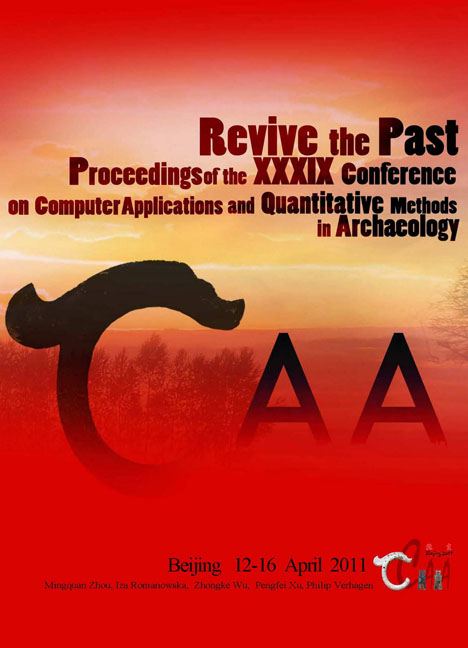 Revive the Past
Revive the Past Towards a System for Semantic Image-Based 3D Documentation of Archaeological Trenches
Published online by Cambridge University Press: 23 June 2021
Summary
Abstract:
Archaeological trenches are mostly documented using 2D representations like hand-made or computeraided (CAD) drawings, photographs and rectified photographs. On the other hand computer vision techniques and range scanners become more and more popular for producing 3D models of archaeological sites. However, these models alone provide no information about the contained archaeological entities of the reconstructed trench. In this work, an algorithm is proposed which uses the semantics “encoded” in 2D CAD drawings to perform a semantic classification of 3D models. The result is a set of segments of the 3D model which corresponds to the semantic entities defined by the polygons in the drawing. Noise, misregistrations and ambiguities (due to the lower dimensionality of the CAD drawing) are dealt with by finding connected segments in the model based on surface normals.
Key Words: 3D Documentation, Semantic Classification, Segmentation, Virtual Archaeology
Introduction
A variety of techniques is used for documenting archaeological trenches and the changes they face throughout the progress of an excavation. Much time and effort needs to be spent for this task, because the interpretation of the configuration of the finds and features is usually carried out in retrospect after the excavation. Hand-made or computer-aided drawing (using CAD or GIS software), photography and image rectification are the most important techniques to accomplish this task. All these methods have in common that they produce only 2D representations of a trench (Fig. 1).
On the other hand computer vision techniques (Pollefeys et al. 2004, Remondino and El- Hakim 2006) and laser scanners have become very popular for producing 3D models of archaeological sites (Cosmas et al. 2001, Wulff et al. 2009). 3D models not only allow for more intuitive representations of trenches, they also enable measuring in 3D space (Wulff et al. 2010) and correlating the models with other spatial data. However, 3D models alone represent only the surface geometry and provide no information about the archaeological entities contained in a trench. To get a semantically enriched model it is necessary to further process the 3D data.
Allen et al. (2004) presented a modelling pipeline for visualising archaeological sites in 3D. They augment 3D models with context information, namely GIS data surveyed at the site. This information is displayed additionally to the 3D surface geometry – the model itself is not classified in any way.
- Type
- Chapter
- Information
- Revive the PastProceedings of the 39th Conference of Computer Applications and Quantitative Methods in Archaeology, pp. 92 - 97Publisher: Amsterdam University PressPrint publication year: 2012
